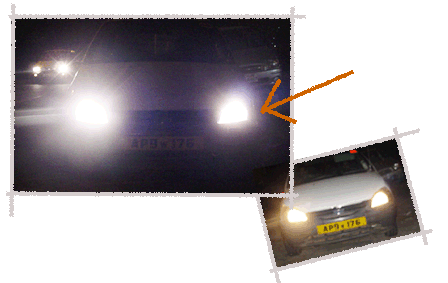
Driver does hardly switch to Upper/dipper of headlights and create a glare, driving during night time. Moreover the proximity between the headlights and the side indicator becomes a problem; one cannot see the blinking indicator due to the glare of the headlight in upper. The glare does not only hurt eyes of the driver but also increases risk while driving.

Traveling during night, when the vehicles coming from the opposite direction are more, the drivers avoid changing the upper/dipper headlights. Driver more often than not, do not switch to Upper/dipper of headlights and create a glare. It should be automatic whenever there is a vehicle coming from the opposite side than relying on the drivers reflex to do so. Frequent exposure to full glare is not good for eyes. The solution could be such that when vehicles come in opposite direction it should be recognized by the vehicle itself and the system should change the lights accordingly.
|
|
Tweet |







There is a thumb rule in interaction design. "Never let the system make assumptions and override critical human decissions"
I remember one of my ex-professors in my design school quoting an airline crash incident in Europe. The pilot misjudged the landing area and started to land the plane in the swamps outside the runway. As he realized the error, he tried to pull up. But the built in "Intelligence" system in the plane did not allow him to do that because, trying to raise a plane in the process of landing is dangerous. The point is, that very attempt might have been way less dangerous than the computer's decissions.
There have been such examples that includes rocket disasters and the famous Windows "Clippy" example. Clippy, the official windows 2000 help assistant that was known to be the annoying helper which did not live past windows 2000.
So, back to the point, automatic dimmers would end up dimming the light at very unexpected times and make the driving a very uncomfortable experience.